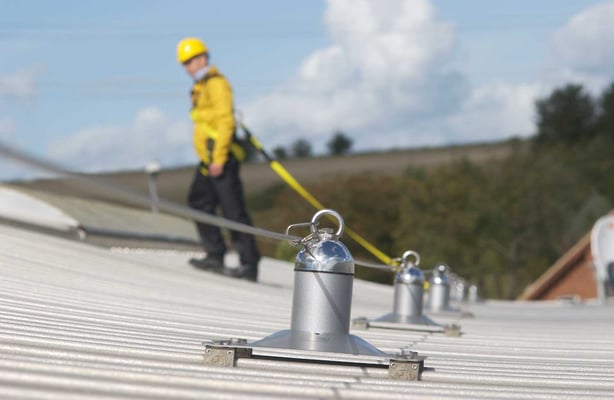
The Science of Falling: How Gravity Shapes Fall Protection
Gravity, a force we often take for granted, binds our world together. It ensures our feet stay planted firmly on the ground, gently pulls rain from the clouds, and keeps our planet in orbit. But for workers operating at great heights, gravity has another side.
Imagine standing atop a towering telecom structure; a simple misstep can trigger a rapid, uncontrolled descent, turning a routine task into a potentially fatal ordeal. To safeguard our workforce in environments where the stakes are sky-high, it's crucial to understand and respect this silent force.
The Parts of a Fall
Falls involve more than just losing balance. They set off a complex series of events driven by the interaction between forces and the human body:
- Acceleration: Picture someone falling from a tall building. As they fall, gravity pulls them down faster and faster. If they never encountered the ground, they would continue to accelerate until air resistance balances out the force of gravity, leading them to a consistent speed known as terminal velocity.
- Impact: Consider a worker in a shipyard climbing up a large ship. If they fall, the force with which they hit the ground will be much greater than their actual weight. This is due to the acceleration they experience while falling. The impact of the fall is not just about the pain they feel upon landing; it’s also about the movement of energy through their body. This energy from the fall can cause damage to various body parts, not just where they land.
- Injury: The human body is resilient, but it has its limits. A technician falling from a telecom tower, for instance, might land on their side. The ribcage could shatter on impact, piercing vital organs. Or, in a less grim scenario, a worker in a stockroom might fall off a stool and break a wrist. The severity varies, but the combination of gravity and the body's biomechanics often results in injuries that are both immediate and long-lasting.
In sectors like construction, falls aren't just common; they're the leading cause of death. Workers scaling skyscrapers or balancing on beams become statistics when safety measures fail or are overlooked. This unsettling fact underscores the urgency to not just understand these forces but to actively fight them with strict safety protocols and equipment.
Designing Fall Protection: The Science Behind Safety
Understanding the mechanics of a fall is only half the battle. To ensure the safety of workers across industries, there is a critical need for specialized fall protection systems.
Here's a more in-depth look at how these systems operate:
- Deceleration: Picture an elevator. If it were to drop suddenly, the impact at the bottom could be fatal. But imagine if strong brakes kicked in midway, slowing the descent and allowing it to come to a halt safely. That's precisely what deceleration in fall protection does. It ensures that workers, if they fall, are slowed down in a controlled manner, dramatically reducing the chances of severe injury.
- Diversion: Think about when you tripped and instinctively turned your body to avoid hitting your face. The body naturally wants to protect its most sensitive areas. Fall protection systems amplify this natural instinct. By redirecting the force of the fall away from areas like the spine and head, these systems reduce the risk of life-threatening injuries.
- Distribution: Ever wonder why snow shoes prevent you from sinking into deep snow? By distributing your weight over a larger surface area, the pressure on any one point is reduced. Similarly, harnesses used in fall protection distribute the impact force over a larger area. This means that instead of one part of the body absorbing all the shock, it's evenly spread out, reducing the risk of concentrated injury.
With a better understanding of fall dynamics and the right protection mechanisms in place, it's possible to substantially mitigate the risks associated with working at heights.
Diversified Fall Protection Can Help
Falls aren’t trivial; they're serious risks that can result in devastating injuries or even fatalities. However, with expert knowledge and the right protection, these risks are manageable. Diversified Fall Protection is your fall protection, from offering customized fall protection solutions to ongoing education and support, they're committed to safeguarding your workers in various industries effectively and innovatively.
Take proactive steps towards ensuring not just compliance but the genuine safety of your workforce. Discover the robust suite of solutions offered by Diversified Fall Protection, and invest in a future where every worker is protected, educated, and supported. Don't wait; explore Diversified Fall Protection now and fortify your operations against fall risks today and always.
Schedule an assessment with Diversified Fall Protection
Contact Us to request a fall safety review

b-1.jpg?width=1368&height=1340&name=Rail%20(175)b-1.jpg)

